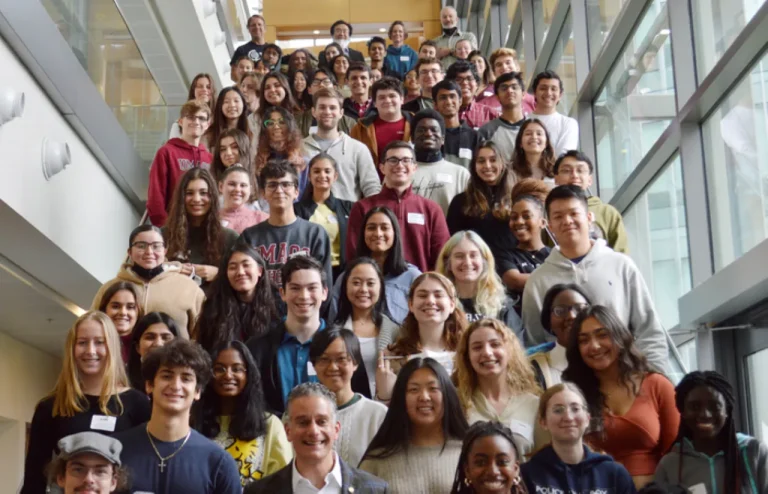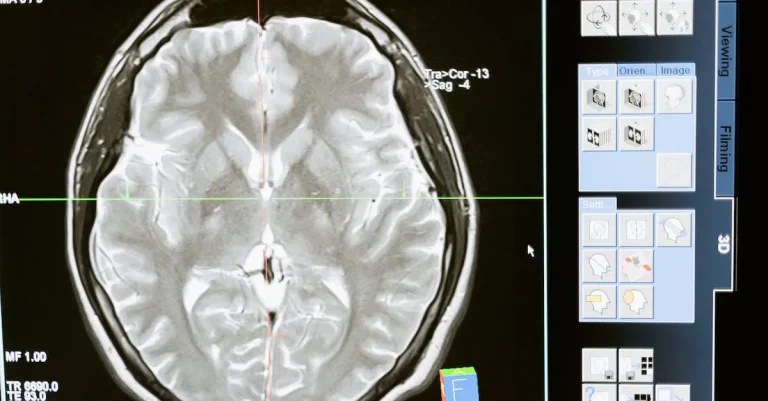The Science Behind Human Behavior And Thought
Understanding what motivates human behavior and shapes human thought has long been a fascination of philosophers and scholars. In modern times, scientists have uncovered fascinating insights into what makes people act, feel, and think the way they do through research in fields like psychology, neuroscience, and behavioral economics.
If you’re short on time, here’s a quick answer: Fields like psychology, neuroscience, and behavioral economics study the science behind human behavior and thought using controlled experiments, brain scans, surveys, and data analysis.
Key factors include genetics, hormones, neurotransmitters, neural wiring, cognitive biases, social pressures, and environmental cues.
In this comprehensive guide, we will explore some of the most important scientific discoveries that shed light on the inner workings of the human mind and the roots of human behavior. Delving into key studies and theories, we will unpack the complex science behind our thoughts, emotions, motivations, personalities, and actions.
Foundations of Psychology
Psychoanalysis
Psychoanalysis, developed by Sigmund Freud, is one of the foundational theories in psychology. It focuses on the unconscious mind and how it influences behavior and thought. According to Freud, our unconscious desires and conflicts shape our behavior, and by bringing these unconscious thoughts to the conscious level, individuals can gain insight into their motivations and make positive changes in their lives.
Psychoanalysis has been widely used in therapy and has greatly contributed to our understanding of human behavior and thought.
Behaviorism
Behaviorism is another important school of thought in psychology, which focuses on observable behavior rather than internal mental processes. B.F. Skinner, a prominent behaviorist, believed that behavior is learned through conditioning, and that the environment plays a significant role in shaping behavior.
Behaviorists believe that by manipulating the environment, individuals can learn new behaviors and overcome maladaptive ones. This approach has been applied in various fields, including education and therapy, and has provided valuable insights into how behavior can be modified and shaped.
Humanism
Humanism is a psychological perspective that emphasizes the importance of personal growth, self-actualization, and the inherent worth of individuals. This approach, popularized by Carl Rogers and Abraham Maslow, focuses on the individual’s subjective experience and their capacity for personal growth and self-fulfillment.
Humanistic psychologists believe that individuals have the innate drive to achieve their full potential and that therapy should focus on facilitating this process. Humanism has had a significant impact on counseling and therapy, emphasizing the importance of empathy, authenticity, and unconditional positive regard.
Cognitive Psychology
Cognitive psychology is a branch of psychology that focuses on the study of mental processes such as perception, memory, thinking, and problem-solving. Cognitive psychologists are interested in understanding how individuals acquire, process, and use information.
They study topics such as attention, language, decision-making, and problem-solving strategies. Cognitive psychology has provided valuable insights into how we think, learn, and make decisions, and has practical applications in fields such as education, cognitive therapy, and human-computer interaction.
It is important to note that these four perspectives are just a few examples of the diverse approaches within psychology. Each perspective offers a unique lens through which to study and understand human behavior and thought.
By combining insights from these different perspectives, psychologists continue to deepen our understanding of the complexities of the human mind.
Insights from Neuroscience
Structures of the Brain
Neuroscience, the study of the nervous system, has provided valuable insights into human behavior and thought. One key area of focus is understanding the structures of the brain and how they influence our actions and thoughts.
The brain is composed of various regions, each responsible for different functions. For example, the frontal lobe is involved in decision-making and problem-solving, while the amygdala plays a crucial role in processing emotions.
Neurotransmitters and Hormones
Another important aspect of neuroscience is the study of neurotransmitters and hormones, which are chemicals that play a significant role in regulating our behavior and emotions. Neurotransmitters, such as serotonin and dopamine, are involved in mood regulation, while hormones, like cortisol and oxytocin, impact our stress levels and social bonding.
Understanding the intricate interplay between these chemicals can help us better comprehend why we feel and act the way we do.
Neuroplasticity
Neuroplasticity is a fascinating concept within neuroscience that refers to the brain’s ability to change and reorganize itself throughout our lives. Contrary to the previous belief that the brain is fixed and unchangeable, research has shown that it can adapt and form new connections.
This phenomenon has important implications for learning, memory, and recovery from brain injuries. By understanding neuroplasticity, we can explore ways to harness its potential for personal growth and cognitive enhancement.
Brain Scan Technologies
Advancements in brain scan technologies have revolutionized our understanding of human behavior and thought processes. Techniques such as functional magnetic resonance imaging (fMRI) and electroencephalography (EEG) allow researchers to observe brain activity in real-time.
These scans provide valuable insights into how different regions of the brain interact and communicate with each other. By analyzing brain scan data, scientists can correlate specific patterns of brain activity with certain behaviors or thoughts, helping us gain a deeper understanding of the complex workings of the human mind.
Behavioral Economics
Behavioral economics is a field of study that combines psychology and economics to better understand human decision-making and behavior. It examines why people often make irrational choices and how these decisions can be influenced by various factors.
Decision-Making Biases
One aspect of behavioral economics is the study of decision-making biases. These biases are systematic errors in thinking that can lead individuals to make suboptimal choices. For example, the anchoring bias refers to the tendency to rely heavily on the first piece of information encountered when making a decision.
This bias can influence everything from purchasing decisions to negotiations. Another common bias is the confirmation bias, where people seek out information that confirms their existing beliefs and ignore evidence to the contrary.
Understanding these biases can help individuals and policymakers make more informed decisions. By recognizing our own biases, we can take steps to mitigate their impact and make better choices.
Nudges
Nudges are subtle changes in the way choices are presented that can influence decision-making without restricting freedom of choice. For example, placing healthier food options at eye level in a cafeteria can nudge people towards making healthier food choices.
This concept has been successfully applied in various settings, such as encouraging people to save more for retirement or to become organ donors.
Nudges work by leveraging cognitive biases and heuristics to guide individuals towards desired behaviors. They have gained popularity because they are cost-effective and often more effective than traditional approaches to behavior change, such as financial incentives or penalties.
Prospect Theory
Prospect theory is a theory in behavioral economics that suggests people do not make decisions based on their absolute value, but rather on the perceived gains and losses relative to a reference point.
This theory challenges the traditional economic assumption of rational decision-making based on expected utility.
According to prospect theory, individuals are more sensitive to losses than gains. They are willing to take risks to avoid losses, but are risk-averse when it comes to potential gains. This asymmetry in decision-making has important implications for various areas, such as investment decisions, consumer behavior, and public policy.
Behavioral Game Theory
Behavioral game theory combines concepts from traditional game theory with insights from behavioral economics to study how people make decisions in strategic situations. It takes into account factors such as trust, reciprocity, and fairness, which are often overlooked in traditional game theory models.
By understanding how individuals behave in strategic interactions, researchers can develop more accurate models and predictions. This field has implications for various areas, including economics, political science, and psychology.
For further reading on behavioral economics, you can visit the Behavioral Economics website.
Evolutionary Factors
When it comes to understanding human behavior and thought, evolutionary factors play a significant role. Evolutionary psychology, genetic influences, and group selection all contribute to shaping the way we think and behave.
Evolutionary Psychology
Evolutionary psychology focuses on how our behavior and thought processes have evolved over time to increase our chances of survival and reproduction. This field of study suggests that many of our behaviors and cognitive processes are rooted in our ancestral past.
For example, our instinctual desire to seek out high-calorie foods can be traced back to a time when such foods were scarce, and our ancestors needed them for energy to survive.
According to evolutionary psychology, certain behaviors and thought patterns have been naturally selected because they conferred a reproductive advantage. For instance, the tendency to form strong social bonds and cooperate with others may have enhanced our ancestors’ chances of survival and procreation.
Genetic Influences
Genetics also play a crucial role in shaping human behavior and thought. Our genes determine the basic template upon which our behavior and cognition develop. While genetics alone cannot fully explain complex human behaviors, they can influence traits such as intelligence, temperament, and predisposition to certain mental illnesses.
Several studies have shown that certain genetic variations can make individuals more susceptible to certain behaviors or mental health conditions. For example, researchers have identified specific genes associated with impulsivity, aggression, and risk-taking behavior.
However, it is essential to note that genetics interact with environmental factors, and the interplay between nature and nurture is complex.
Group Selection
Group selection is a concept that suggests that certain behaviors and thought patterns have evolved not only for individual survival and reproduction but also for the benefit of the entire group. This idea challenges the traditional notion that evolutionary processes only act on individuals.
Group selection theory argues that cooperative behaviors and altruism can be advantageous for the survival of a group, even if they may not provide immediate benefits for the individual. For example, individuals who are willing to share resources and help others within their group may increase the group’s overall chances of survival and success.
While the concept of group selection is still debated among evolutionary biologists, it offers a fascinating perspective on how our behaviors and thought processes may have evolved to promote cooperation and social cohesion.
Social Psychology
Conformity and Peer Pressure
Conformity is a powerful force that shapes human behavior and thought. It refers to the tendency of individuals to adjust their attitudes, beliefs, and behaviors to align with those of a group or social norm.
Peer pressure is a common example of conformity, where individuals may feel compelled to conform to the opinions and actions of their peers in order to fit in or avoid social rejection. Studies have shown that the desire to conform can be so strong that people may even go against their own judgment or values.
For example, the Asch conformity experiments conducted in the 1950s demonstrated how individuals would give incorrect answers to simple questions just to match the responses of their peers.
Groupthink
Groupthink is another phenomenon that occurs within social psychology. It refers to the tendency of group members to prioritize harmony and consensus over critical thinking and independent decision-making.
In groupthink, the desire for unanimity can lead to the suppression of dissenting opinions and the failure to consider alternative viewpoints. This can result in flawed decision-making and actions that may not have been taken if individuals had been thinking independently.
Groupthink has been observed in various contexts, including business, politics, and even military operations. The Bay of Pigs invasion in 1961 is a famous example of groupthink, where the decision-making process was influenced by a desire for consensus and conformity within the group, leading to a disastrous outcome.
Attitudes and Persuasion
Attitudes play a crucial role in human behavior and thought. They are a combination of beliefs, feelings, and evaluations towards a particular person, object, or idea. Attitudes can be formed through various sources, such as personal experiences, socialization, and media influences.
Persuasion is the process by which attitudes can be changed or reinforced through communication. Understanding the principles of persuasion can help individuals or organizations effectively influence others.
For example, the elaboration likelihood model proposes that persuasion can occur through either central or peripheral routes. Central route persuasion involves logical arguments and evidence, while peripheral route persuasion relies on superficial cues and emotional appeals.
Cognitive Dissonance
Cognitive dissonance is a psychological theory that explains the discomfort individuals feel when they hold contradictory beliefs, attitudes, or behaviors. According to this theory, individuals are motivated to reduce this dissonance by either changing their beliefs or justifying their actions.
For example, if someone is aware that smoking is harmful to their health but continues to smoke, they may experience cognitive dissonance. To resolve this discomfort, they may either quit smoking or convince themselves that the health risks are exaggerated.
Cognitive dissonance can have significant implications for behavior change and decision-making.
Conclusion
The human mind is immensely complex, but scientific research continues to uncover fascinating insights into why we think, feel, and act the way we do. Fields like psychology, neuroscience, and behavioral economics have revealed key biological, cognitive, and social factors that influence human behavior.
While many questions remain unanswered, the ongoing quest to illuminate the science of human thought and behavior promises to unlock deeper truths about our minds, brains, and motivations. As science progresses, we edge closer to comprehending the inner workings behind our incredible and mysterious human nature.







